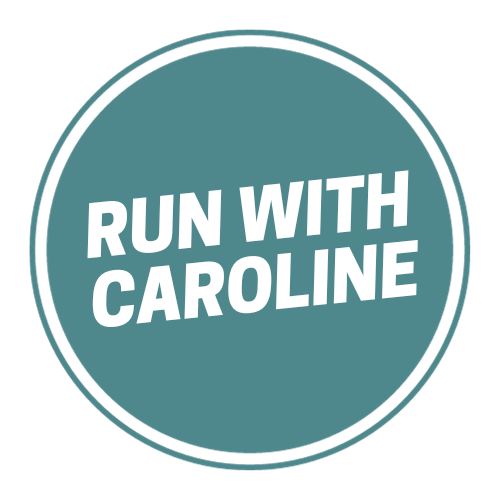Being injured as a runner is frustrating. Each running injury has its own causes and treatment.
Here’s what to do should you find yourself unable to run.
You have a race coming up next week, your training has been going great, and you’re confident that you can break your personal best.
Next thing you know, your foot hurts and you’re forced to a stop. You’re injured. Is there anything worse as a runner?
Having weeks, months, or years of training taken from beneath your feet for the sake of an injury. Even when you did pre-hab exercises to minimise this risk.
It sucks, I get it. However, you must see the positives (as hard as it may be) that come with injury.
When you have a running injury, it should be seen as a time to grow, to work on weak areas of your body, and to build further mental strength for your inevitable return to the sport.
To help you make that comeback that you so eagerly desire, this article will highlight five things you should do once you have a running injury.
This article is brought to you by Matthew from Running101. Running101 provides quality training tips, gear reviews, the latest running news, and more – helping you take your running to the next level.

Take a step back
No doubt the first few days of your running injury will suck, especially if you find yourself injured in summer when everyone else is about stomping the pavement.
However, instead of making your injury worse and “risking” a run, it’s important to take a step back from your training, looking at the bigger picture.
As I mentioned previously, you should look for the silver lining that comes with injury. If possible, use this as a time to grow, to work on weaker areas or muscle groups, and to build further mental strength.
However, you should also look at your training, more specifically: why did you get injured in the first place?
Often, most running injuries are a result of overtraining. This is when we train too much with too little rest, placing too much stress on our bodies and forcing them to breakdown a little too much.
As a general rule of thumb: you want to increase your weekly mileage by no more than 10% each week, too much too soon only increases your risk of injury.
The same applies when making your return, you want to be patient and gradual when building up your mileage to where it once was.
See a physio if you haven’t already
If your running injury doesn’t ease up in a few days, it’s time to get yourself booked in with a physio.
I recommend making notes of the pain, including whether it’s sharp or dull, how much it hurts on a scale of one to ten, and where exactly the pain is.
Providing as much detail as possible to the physio allows them to diagnose you as accurately as possible, providing you with the necessary steps to recovery.
Upon seeing your physio, you’ll likely be given a timeframe of when you can realistically return to running. However, it’s important to take this with a grain of salt, it could be sooner or it could be much later.
Nevertheless, it’s essential not to rush this process, jumping into too high an intensity too soon only increases your risk of re-injury.
Likewise, you’ll also likely be given some rehab exercises.

Don’t skip your rehab exercises
Alongside overtraining, a common cause of running injuries is muscular imbalances.
This is why strength training is so important, preventing other muscles from over-compensating to make up for weaker muscles.
One of the best ways to even out these muscular imbalances is rehab exercises. You’ll likely also be given some stretches.
While these exercises may be downright boring, skipping them will only delay your return to the sport.
Dedicate thirty-minutes to an hour each day to perform these, not rushing them and ensuring you’re utilising the correct form.
Performing as much rehab as possible (without overdoing it) will help you return quicker from your running injury, especially if your rehab is focused on strengthening these weaker muscles.
Monitor your progress
Great, so you’ve been performing your prescribed rehab exercises and you’re wondering when it’s safe to run.
Now, the next step is to monitor your progress.
I recommend giving it at least one to two weeks before attempting a light jog. However, seeing a physio will likely give you a more accurate time frame to follow.
Starting with a light jog, not a run is paramount. Jumping into your old running pace and distance will increase your risk of re-injury.
Your body is no longer used to the same stress placed upon it as before.
After each run, I recommend jotting down the pain felt on a scale of one to ten.
Over time, and if sensible with your return while still carrying out your rehab exercises, the pain should begin to go away.
Nevertheless, I don’t recommend increasing your pace or distance too soon as this too, will increase your risk of re-injury.
Remember, patience is key when it comes to recovery.

Be patient and don’t rush the process
This brings us to my final point, being patient – the most boring yet essential step of the process.
While it can be tempting to lace up and hit the streets for a quick run once in a while, running too soon will do more harm than good.
However, that doesn’t mean you can’t train. In the meantime, and to keep fitness up, we recommend cross training, whether cycling, swimming, or hiking (if your injury permits).
Performing other forms of exercise will keep your mind occupied, while, of course, maintaining best as possible your aerobic and running fitness.
Remember to make notes of the entire injury process. Log each and every day of exercises performed.
Log the pain experienced and rate this on a scale of one to ten. Finally, note down how long you can run without experiencing pain.
- 5 things I wish I’d known before returning to running - March 3, 2024
- Running 20 minutes a day: Benefits + how to start - January 27, 2024
- How to run your first 2 hour half marathon - January 16, 2024

Oliver John
Thursday 16th of September 2021
Running injuries are common for a runner especially if they started running now. Thanks for sharing this amazing guide
Matthew
Monday 22nd of June 2020
Was a pleasure to work with you, Caroline! Hope this provides value to your audience :)